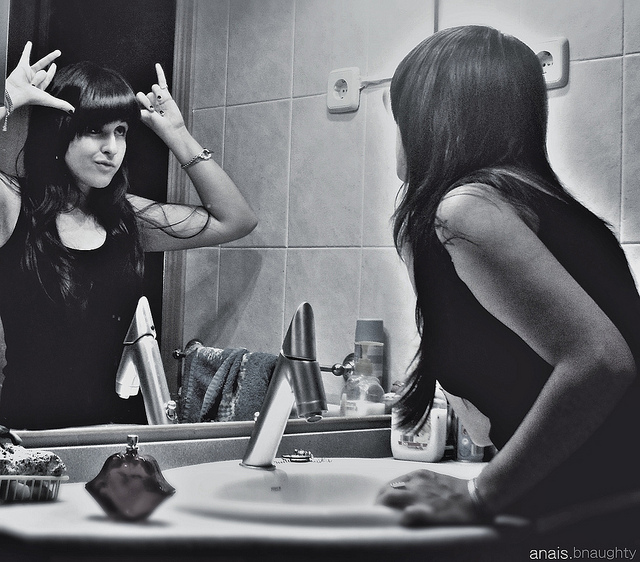
“We have been raised to fear the yes within ourselves, our deepest cravings[…] Within the celebration of the erotic in all our endeavors, my work becomes a conscious decision—a longed-for bed which I enter gratefully and from which I rise up empowered.” ~ Audre Lorde
When we study yoga, we take a journey together. The yoga studio is our sanctuary, our bodies are our temple and our mat is the longed-for bed where we touch the divine—a sacred time to let go of all that life is demanding of us.
It’s a much needed refuge from the chaotic hustle and bustle of living in New York City.
I find many correspondences between my work as a desire coach and the yogic journey. Desire and yoga are intimately connected to each other. Desire is something I come back to practice day after day; it is not about reaching completion, even if I finally get the job I want and the relationships I want, in all the ways I want it.
Desire does not seek satisfaction, because it never stops burning. Desire is an inward journey of becoming more alive. As a Desire Coach, I support others on this journey.
The best way I know how to teach others about desire is to compare it to a language. Most of us consider it a foreign language that we can’t understand. The language of desire begins with the body, which communicates its desires to us in impulses and instincts. In this way, desire is linked to yoga, which also works with the raw material of that body and seeks to enhance it.
If you know the language of yoga, we have a head start in understanding the language of desire.
Below, I created a list of similarities between the practice of yoga and our desire to better understand the language. This list is only the beginning and I hope you find it supportive and useful on your inward journey.
1. It is a practice of dedication.
We know the true magic of yoga comes from our dedication to our practice. We make it a priority in our lives and allow the process to transform us.
In the same manner, we become dedicated to our desire. It is tempting to take the easy route and abandon the divine voice of intuition, which pulls us in a specific direction. It becomes too hard and the risk too great. We fear encountering an undeniably vital force that clashes with what society deems safe.
That’s okay; like yoga, it is not a matter of falling down that determines success, but rather our resilience in getting back into the pose. The slow practice of opening our hips in yoga is akin to the slow practice of receiving what it is we want in all of our relationships. Slowly, we learn to trust and become committed to our desire.
2. It is a practice of being more present.
Contrary to popular opinion, desire has little to do with dreams and fantasies, and much more to do with the present moment of what we want. Desire is fluid and changing, and co-arises with immediate circumstances. In this sense, our desire becomes our inner compass, and following it becomes a ride. In fact, we let go of an attachment to a future plan, because the ride of following our present moment desires unfolds itself naturally.
We stay present in the moment to feel our bodies in the same way we are slowing down to feel our bodies in yoga. We trust the wisdom of our bodies to know what they want. Trusting this will not have us go into a crazed hedonistic slumber, but instead allow us to undergo a metamorphosis into a consciously awake being.
3. It is a practice of listening.
I personally think of going to yoga as going on a date with my body. I give pristine attention and listen with open curiosity and intrigue to what my body is saying to me. To do so, I have to stop listening to my own thoughts to really hear.
Similarly, when we quiet the noise of our minds, we can learn to hear the voice of our desire. Our desire is usually in the form of a whisper, or can be heard through its favorite expression of yearning, heat and pulling within the body. When we are making decisions, our desire already knows what it wants; usually, we are just not listening.
4. It is a practice of surrender.
Yoga is a practice of letting go of control. We surrender to whatever we are avoiding in the present moment as our bodies move in flow with our breath. Surrender cannot be forced or taught, only felt through slow practice.
To understand the language of desire, we have to surrender to the power and reality of what it is. Usually, that is why we have so many layers of fear protecting us from surrendering. Desire is part of our involuntary system and is undeniable in what it wants. There are only wasted efforts in attempting to mold our desire to look a certain way.
Desire does not care about what the ego wants. Ever feel attraction towards someone that is outside your ego comfort zone? Or want to spend your time making art others claim will never be profitable? These are examples of places where desire and ego clash. That is why surrender to our desire often feels like ego death.
5. It is a practice of holding a pose.
In yoga, we feel the stretch, the burn, and we breathe deeper into the pose. In this place, our only job is to feel and breathe.
I equate this with the importance of learning how to hold the sensation of our desire. One of the reasons we choose to dissociate from desire is that it can just feel so damn intense. Usually, when we feel some type of intense sensation, our instant reaction is to get rid of it.
In the practice of desire, we learn to hold the pose. Desire is not about instant gratification or grasping for the object of our affection. Instead, in holding the pose, we learn to build the energy of desire as a magnet. Then, as our desire strengthens, it is not about chasing anything. Instead, we magnetize our desire to move towards us. It is our internal fire that draws our desires towards us.
6. It is messy.
Sometimes we show up to yoga after work, and the day’s makeup runs down our face with sweat and salt. Or perhaps we show up early in the morning with our bed head and dreary mood. Either way, we show up and acknowledge it is going to get messy. We may cry, feeling emotions we have not made space for yet. Or our ego screams as it compares itself to everyone’s cool yoga clothes and hot bodies. We think about our belly fat and cellulite on our legs. Our inner worlds start unraveling on the yoga mat.
Oh yeah, just like Desire! Awakening to our desire is not a journey of feeling good. We have to feel how badly we yearn, acknowledge how hungry we are and face all our fears and conditions. Living from a place of deep desire is courageous and brave.
All the above descriptions allude to our inner truth. We don’t ask the divine why it wants what it wants; desire doesn’t need to make sense.
Touching our desires feels larger than us. We feel it to be powerful and sacred. Our inner wisdom is accessed. From this place, we move towards union with others and ourselves.
It is no wonder that it is this hunger that moves us towards the sacred union of sex.
This is not meant to be a clever theory to live by, but rather an inner knowing built through practice. My suggestion is to apply the above descriptions to direct experience.
So now, I ask: What do you want?
What do you really, really want?
~
Relephant Read:
Why Manifesting our Truest Desires is a lot like Reaching Orgasm.
~
Author: Leah Petrusich
Editor: Toby Israel
Photo: Anais Gómez-C at Flickr
~






Read 0 comments and reply